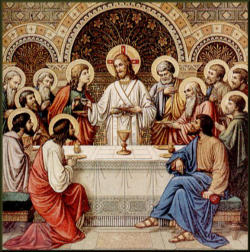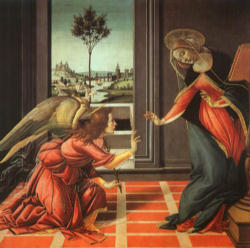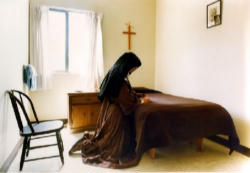 There is a Latin maxim that addresses the centrality of worship in the life, identity and mission of the Catholic Church; “Lex Orandi, Lex Credendi“. The phrase in Latin literally means the law of prayer (“the way we worship”) is the law of belief (“what we believe”). It is sometimes expanded to “lex orandi, lex credendi, lex vivendi“, further deepening the implications of this truth – how we worship reflects what we believe and determines how we will live our lives.
There is a Latin maxim that addresses the centrality of worship in the life, identity and mission of the Catholic Church; “Lex Orandi, Lex Credendi“. The phrase in Latin literally means the law of prayer (“the way we worship”) is the law of belief (“what we believe”). It is sometimes expanded to “lex orandi, lex credendi, lex vivendi“, further deepening the implications of this truth – how we worship reflects what we believe and determines how we will live our lives.
The Catholic Church has long understood the importance of formal worship when Christians gather together. The early Church took their times of formal worship quite seriously. When I was on my journey back to the Catholic Church, I was surprised to find early instructions on formal worship in the writings of the first few centuries such as the Didache (the teaching of the twelve). Liturgy was not a later addition, but was at the very heart of the early church and her worship.
How we worship reveals and guards what we believe and guides us living our Christian life. We were made to worship and as we worship we are transformed. Worship helps us comprehend and fulfill our Christian mission in the world by manifesting the continuing presence of the Risen Jesus Christ in the heart of the Church, which is His Body. Liturgical worship is not an “add on” for a Catholic Christian. It is the foundation of Catholic identity; expressing our highest purpose.
The word “liturgy” actually means the “work” of the faithful. Worship reveals what we truly believe and how we view ourselves in relationship to God, one another and the world into which we are sent to carry forward the redemptive mission of Jesus Christ. When we read the last book of the Bible, the Book of Revelation, we are presented with a vision of worship in heaven, it is profoundly liturgical.
None of this is meant to say that informal worship is not important.There are many ways to worship the Lord privately and in groups. However, how the Church worships when she gathers for formal Liturgy is a prophetic witness to the truth of what she professes. Good worship becomes a dynamic means of drawing the entire human community into the fullness of life in Jesus Christ. It attracts – through beauty to Beauty. Liturgical worship informs and transforms the person and the worshipping community which participates in it. There is reciprocity between worship and life.
I have spent decades in ecumenical work. In some Christian circles the word “ecumenical” has a negative connotation. However, properly understood, it refers to work between Christians of deifferent communities. Perhaps because of my experience, I find it odd that right when some of our Christian friends in other confessions and communities are searching for a deeper encounter with the beauty of the Lord in formal worship; for sign, symbol and mystery, for a connection with the ancient Church in her divine worship, some parts of the Catholic Church are discarding the treasures that make her formal liturgical worship so beautiful, full of mystery and so compelling and attractive to those seeking a deeper experience of worship and Christian life.
Over the last two decades, some who purported to be liturgical experts stripped away the richness and the depth that draws so many to the treasure that is Catholic worship, liturgy and life. Their numbers and influence are dwindling. The Catholic seminaries that are now full (and their number is increasing) are filled with candidates who want the vibrant, symbolic, faithful, richly liturgical, devout fullness of Catholic worship, faith and life. The movement toward dynamic, symbolic and beautiful Liturgy is not about going “backward” but forward and toward eternal worship.
In the Catholic Church today what are called the lay ecclesial movements – such as Cursillo, the Charismatic renewal, Opus Dei, Communion in Liberation, Focalare – are flourishing. Even though spontaneous worship forms a part of their expression, these movements are also in the forefront of calling for a return to faithful Liturgical worship. This is because spontaneity and liturgy are not opposed to a Catholic. The new Catholics, those coming into full communion with the Catholic Church from other Christian communities, are flocking to the dynamically orthodox and faithful Catholic parishes. The symbols are coming back into our sanctuaries and new ones are emerging.
There was a movement called Iconoclasm (“Image-breaking”) in the eighth and ninth centuries in the Church. It became a full scale heresy. The term has come to be associated with those who rejected icons, but it speaks to a contemporary problem, liturgical minimalism and the loss of the sense of the Sacred in our Churches. Icons are meant to put us in touch with the transcendent mysteries of our faith. I pray with icons and have for many years. I cherish their liturgical role in the Eastern Church. In fact, one would never find an Eastern Church, Catholic or Orthodox, without icons. The contemporary “iconoclasts” are those who seek to de-mystify Christian faith, life, worship and practice. They are not the future of the Catholic Church but the past.
There are some who seem to think that the symbols of our worship, our faith and our life are a problem. While they strip our sanctuaries and make our liturgical experiences barren, they think they have helped us by somehow making the faith more ‘relevant”, “meaningful” or “contemporary”. They are sadly mistaken and have done the Church and her mission a disservice.
They fail to grasp that, by nature and grace, human persons are symbolic. Man (and woman) is created in the image of God, and is a divine icon. Icon means “image”. Jesus Christ is the Icon of the Father. The Church is an icon of Jesus. Symbols touch us at a much deeper level than words or emotive or affective participation can. They touch us at the level where authentic religion and worship truly begins. It is there where we hunger the most for experiencing and encountering the living God. True Liturgy opens the door.
Pope Benedict XVI once wrote, “Worship cannot come from our imagination: that would be a cry in the darkness or mere self-affirmation. True liturgy supposes that God responds and shows us how we can adore Him. The Church lives in His presence – and its reason for being and existing is to expand His presence in the world.”
“Lex Orandi, Lex Credendi. Lex Vivendi“. As we worship, so we will believe – and so we will live our lives in the Lord for the sake of the world.

